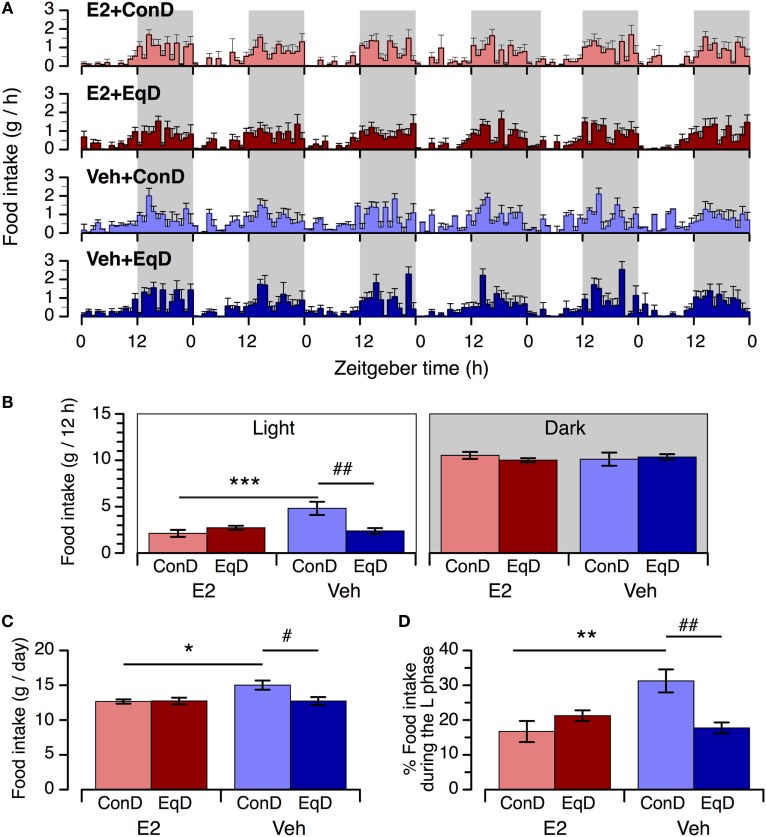Figure 2.
The effect of estradiol (E2) replacement and dietary S-equol on circadian feeding patterns (A), food intake during the light phase [(B), left] and dark phase [(B), right], daily food intake (C), and percentage of daily food intake that occurred during the light phase (D) in ovariectomized rats. Rats were ovariectomized and assigned to the E2-replaced or cholesterol [vehicle (Veh)]-treated group. These rats were fed a standard (control) diet (ConD) or an S-equol-containing diet (EqD) Values are shown as the mean ± SEM (n = 6 in each group). Shading in A depicts the 12-h dark phase. *, **, and ***, significant differences (P < 0.05, P < 0.01, and P < 0.001, respectively) between the E2-replaced and Veh-treated groups fed the same diet. # and ##, significant differences (P < 0.05 and P < 0.01, respectively) between the rats fed ConD and EqD with the same treatment.

